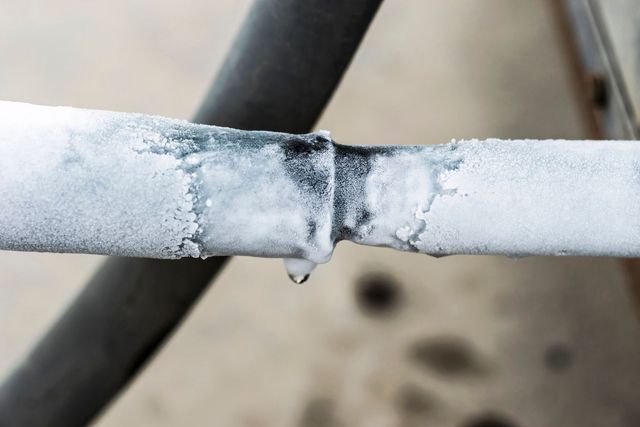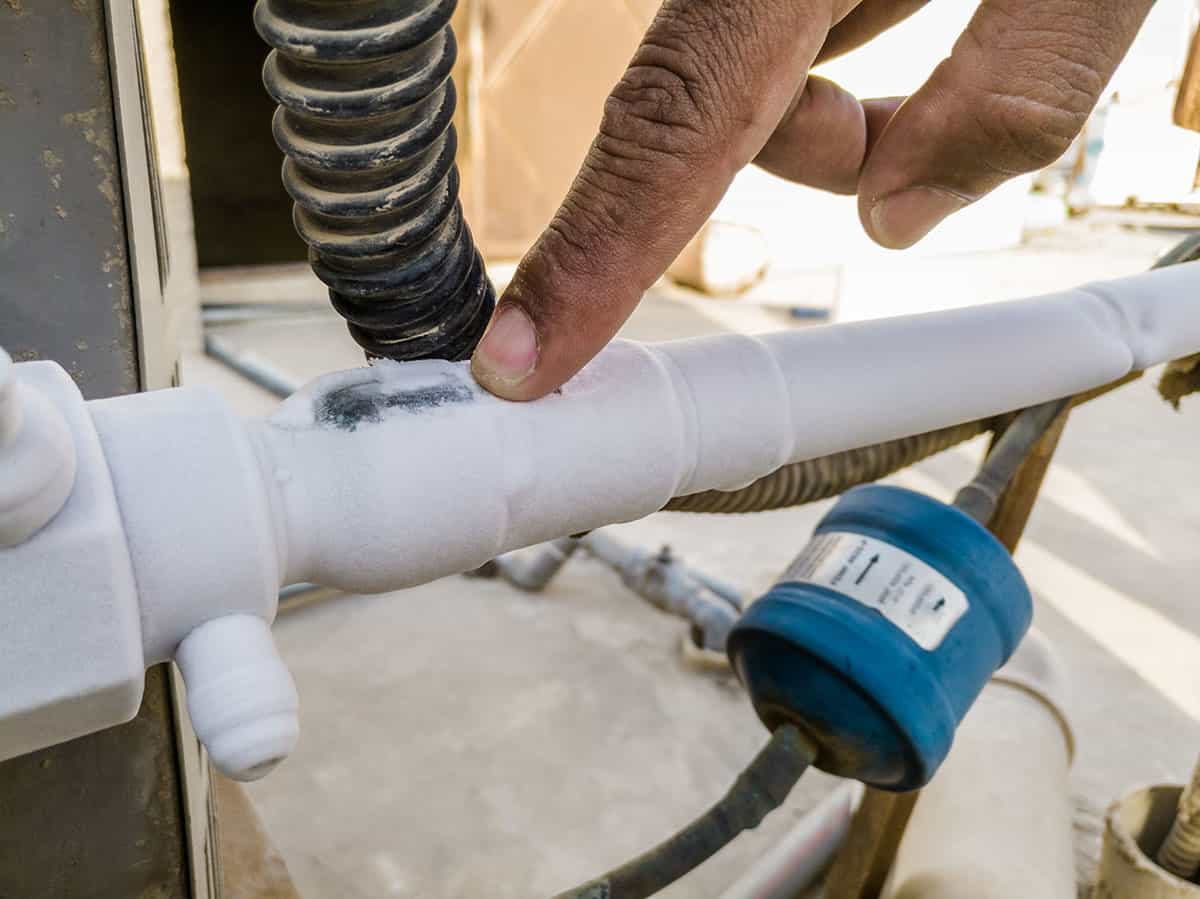How to Deal With a Frozen AC Pipe - Essential Measures for Restoration
How to Deal With a Frozen AC Pipe - Essential Measures for Restoration
Blog Article
The article author is making a few good points related to How can I fix an air conditioner’s frozen pipe? in general in this article further down.

Intro
Uncovering that your air conditioning pipeline is iced up can be concerning, particularly during warm summer months when you count on your air conditioning unit the most. Understanding what to do in such a scenario is crucial to prevent additional damage to your cooling system and ensure your comfort inside your home.
Comprehending the Causes
Numerous factors can contribute to the freezing of an air conditioning pipe. Recognizing these reasons can assist you resolve the concern efficiently.
Absence of Airflow
One typical root cause of an icy a/c pipeline is inadequate air movement. When the air flow over the evaporator coil is restricted, it can cause the coil to drop below freezing temperature level, resulting in ice development on the pipeline.
Reduced Refrigerant Levels
Insufficient refrigerant levels in your air conditioning system can likewise cause a frozen pipe. Low refrigerant degrees can cause the stress in the system to go down, bring about the cold of wetness on the evaporator coil.
Winter Conditions
In cooler environments, freezing temperatures outside can add to the freezing of air conditioning pipes. If your air conditioner system is not effectively insulated or if there are leakages in the ductwork, chilly air can infiltrate the system, triggering the pipeline to ice up.
Dirty Air Filters
Dirty or stopped up air filters can restrict air movement in your AC system, bring about various issues, including a frozen pipeline. It's essential to replace or cleanse your air filterings system frequently to ensure proper air flow and protect against ice accumulation.
Indications of a Frozen AC Pipe
Recognizing the indicators of an icy air conditioning pipe is vital for prompt action.
Reduced Airflow
If you observe a significant reduction in air movement from your vents, it could suggest an icy pipe.
Ice Buildup on the Pipe
Visible ice accumulation on the refrigerant line or the evaporator coil is a clear indicator of an icy AC pipe.
Unusual Sounds from the Unit
Uncommon audios, such as hissing or gurgling, coming from your a/c unit can signal that there's ice existing on the pipe.
Immediate Actions to Take
When confronted with a frozen air conditioner pipe, it's necessary to act promptly to stop additional damage to your air conditioning system.
Turning off the air conditioner
The primary step is to shut off your ac unit to avoid the system from running and exacerbating the issue.
Checking for Blockages
Evaluate the area around the indoor system for any kind of blockages that may be blocking airflow, such as furniture or curtains.
Thawing the Pipe
You can utilize gentle methods like placing towels soaked in warm water around the frozen pipe to aid thaw it slowly.
Preventive Measures
Taking preventive measures can aid stay clear of future events of an icy air conditioner pipeline.
When DIY Methods Fail
If your efforts to thaw the pipe or address other issues are not successful, it's time to call a specialist.
Value of Hiring a Professional HVAC Technician
A licensed HVAC professional has the proficiency and tools required to identify and repair concerns with your AC system safely and properly.
Regular Maintenance Checks
Schedule normal maintenance consult an expert HVAC specialist to guarantee that your air conditioning system is running successfully.
Altering Air Filters
On a regular basis replace or cleanse your air filters to stop airflow restrictions and preserve optimal efficiency.
Protecting Exposed Pipes
If your air conditioning pipelines are subjected to cool temperatures, consider protecting them to prevent cold throughout winter months.
Looking For Professional Help
If DIY methods fail to fix the concern or if you're unsure about exactly how to continue, it's best to look for support from a certified HVAC technician.
Verdict
Dealing with an icy air conditioner pipeline can be a frustrating experience, yet understanding how to react can assist minimize damage and restore convenience to your home. By recognizing the reasons, recognizing the indicators, and taking timely action, you can properly attend to the issue and protect against future events.
What to Do If Your AC Line Is Frozen
Make Sure All Supply and Return Air Vents Are Open
If you notice problems with airflow, the first thing you should do is check your supply and return vents. Supply vents distribute clean, conditioned air throughout your home. As this air becomes stale, it’s pulled into the return vent, where it’s reconditioned before being sent back out through the supply vent.
When these vents are closed, air won’t flow in the home. Before examining your AC, check the vents in every room and ensure they’re all open.
Check for a Dirty Air Filter
Another possible cause of limited airflow is a dirty air filter. Your air conditioner’s filters catch elements you don’t want to breathe in, such as dirt and dust. Over time, filters can become clogged, ultimately blocking air from flowing in and out. The lack of airflow can then cause the entire coil to freeze and will completely restrict any air from moving through it. The AC may need to be powered off for one to two days to allow the coil to thaw after replacing the filter to allow proper functioning of the unit. This debris can also accumulate on your AC’s evaporator coil, requiring a more serious repair. In general, air filters should be cleaned regularly (about every two weeks).
Assess Your Outdoor Unit
In addition to checking your AC, assessing the outdoor unit is a good idea. Also known as the condensing unit, it works with your interior unit to release heat outside. An issue with the outdoor unit can result in rising internal temperatures.
Overgrown Shrubs or Clogged Leaves
From leaves and twigs to shrubs and debris, there’s no shortage of outdoor elements that can accumulate around your condensing unit. When these elements get lodged inside the unit, they can block airflow. Fortunately, removing the blockage can solve the problem.
Sounds of a Broken Fan
Shrubs and leaves aren’t the only things that can impede your outdoor unit’s airflow. If the fan is broken, the unit won’t be able to properly get rid of heat — which means the internal temperature won’t go down. First, make sure the fan is spinning. If it is, check for the following sounds of a broken fan:
Buzzing Rattling Screeching Hissing Clicking Preventative Measures
Nobody wants to deal with a frozen AC line. In addition to causing problems with your air conditioner, they require professional repairs. On the bright side, there are preventative measures you can take to help ensure this issue doesn’t arise in the first place.
https://www.coopergreenteam.com/blog/what-to-do-if-ac-line-frozen

I discovered that write up on How can I fix an air conditioner’s frozen pipe? when doing a search on the search engines. Are you aware of somebody who is excited about the topic? Do not hesitate to promote it. Many thanks for going through it.
Call Today Report this page